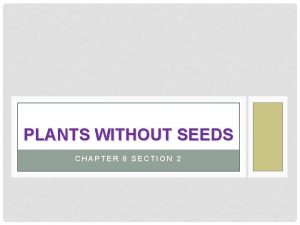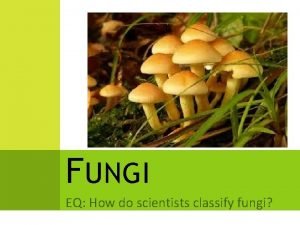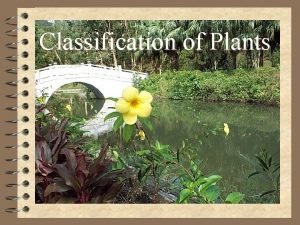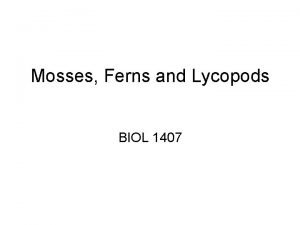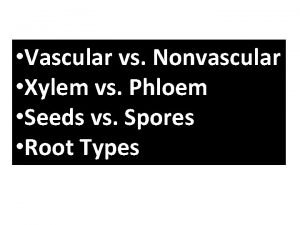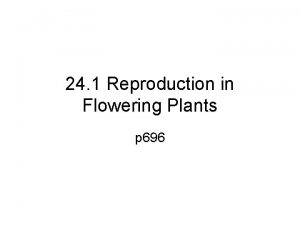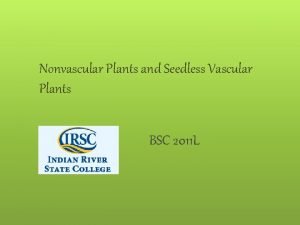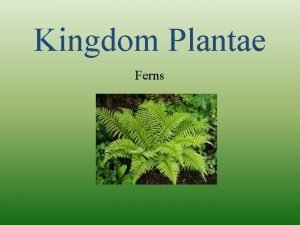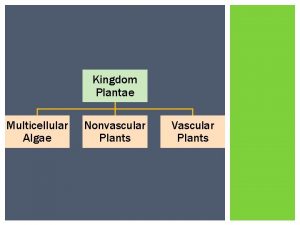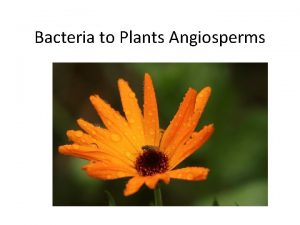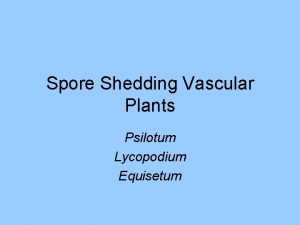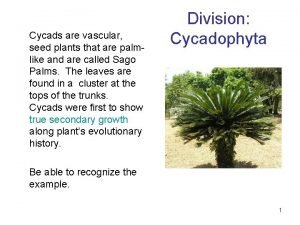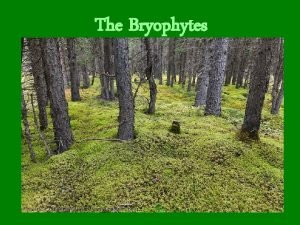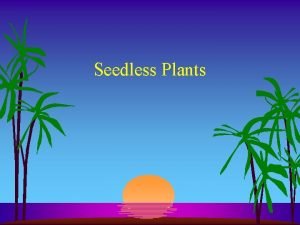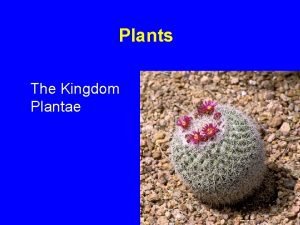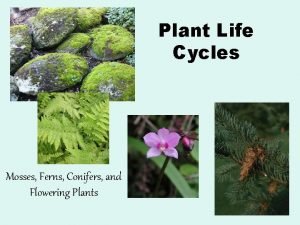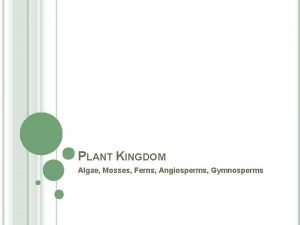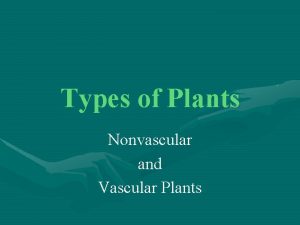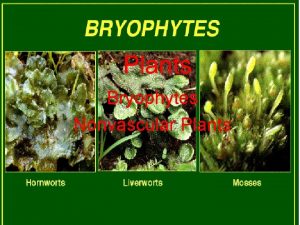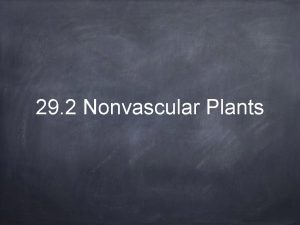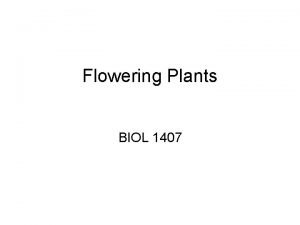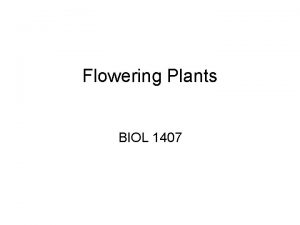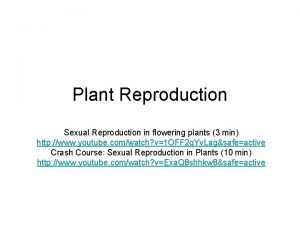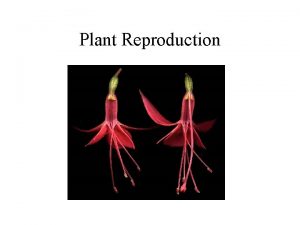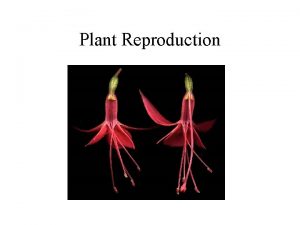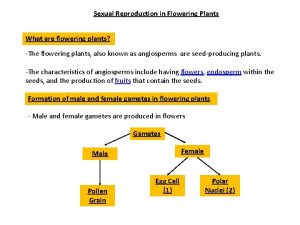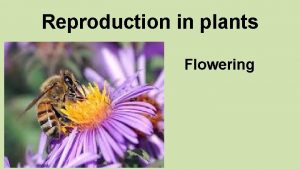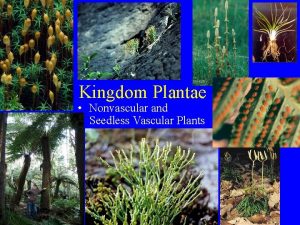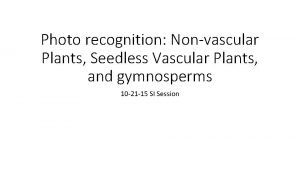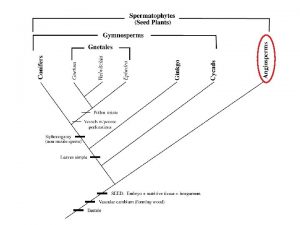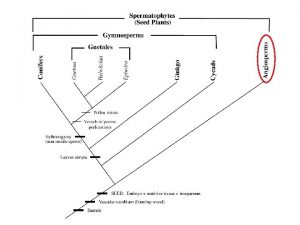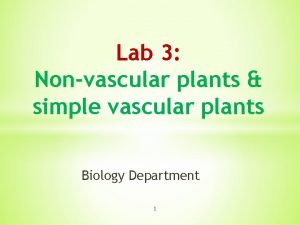Vascular and Nonvascular plants Flowering Plant Reproduction Vascular






















- Slides: 22

Vascular and Nonvascular plants & Flowering Plant Reproduction

Vascular plants have tissue that SUPPORTS the plant and CARRIES water and food throughout the plant. Roots, stems, and leaves all contain vascular tissue.

Two types of vascular tissues: 1. Xylem (zy-lum)- carries water from the roots to the plant 2. Phloem (flow-em)- carries food from leaves to the rest of the plant

Nonvascular plants • Non vascular plants are classified as plants, but do not have “true” roots. • They have “root-like” structures that anchor them to the ground. • They do not have “true” leaves because they do not have veins. • They have small “leaf-like” structures that make food.

Moss and Lichen Mosses grow on trees, rocks, and other places where they can absorb water.

The differences Vascular Nonvascular 1. 2. 3. Vascular plants are much larger in size Vascular plants have two types of tissue. Vascular plants have true (real) roots, stems, and leaves Nonvascular plants are not tall 2. They grow very close to the ground. 3. Nonvascular plants do not have “true” roots, stems, and leaves.

Plant Reproduction in Flowers

Reproduction in Flowering Plants Flowers are the part of the plant where seeds are made. seeds

Reproduction in Flowering Plants Seeds are what make new plants grow. seeds

Reproduction in Flowering Plants There is a male and female part of every flower. the stamen (male)

Reproduction in Flowering Plants The stamen and the pistil are the two main reproductive parts of the flower. the pistil (female)

The Stamen Here is a diagram of the stamen. The tip of the anther is where the pollen is made. pollen anther filament the stamen (male)

The Pistil Here is a diagram of the pistil, which grows up from the ovary. The ovary produces egg cells. stigma style ovary egg cells (ovules) the pistil (female)

Full diagram Of course, not all parts of the flower have reproductive functions, like the petal, sepal and receptacle. stigma style ovary egg cells (ovules) stamen anther pistil filament petal sepal receptacle

Functions Even though the petal, sepal and receptacle don’t have reproductive purposes, they are all still important functioning parts of the flower. pistil stigma style ovary egg cells (ovules) stamen anther : protects the reproductive parts and attracts insects filament petal sepal : protects the plant and receptaclehelps to hold moisture : stem and base of the flower

Pollen is the fine, dust like powder that contains the male reproductive cells of seed-bearing plants. As this bee collects pollen from the stamen, the female organs in the pistil are fertilized by the pollen.

Pollination is the transfer of pollen from the stamen (male) to the pistil (female) in a flower. the stamen (male) the pistil (female)

Pollination The process of pollination can happen from wind, insects, birds, and other animals carrying and transferring the pollen from the stamen to the pistil. Although bees are the insect who are most famous for pollination, many other insects also help to pollinate plants. Without insects doing this very important job, the world would look much different!

Pollination Without pollination, flowers could not reproduce, and therefore could not survive. Birds also transfer pollen for the flowers, and are rewarded with tasty nectar.

Summarizer In paragraph format, explain how flowering plants can reproduce. . Make sure to discuss terms such as: stamen (male) anther filament pollen pistil (female) style stigma ovary egg pollination fertilization

Photo Source Page *Note: All images included in this presentation are not subject to copyright and are within the public domain, were taken by myself , or were created using power point image formatting by © Mr. Jacksbackpack Lesson 1: • • "The Sun by the Atmospheric Imaging Assembly of NASA's Solar Dynamics Observatory - 20100819" by NASA/SDO (AIA) http: //sdo. gsfc. nasa. gov/assets/img/browse/2010/08/19/20100819_003221_4096_0304. jpg. Licensed under Public Domain via Commons https: //commons. wikimedia. org/wiki/File: The_Sun_by_the_Atmospheric_Imaging_Assembly_of_NASA%27 s_Solar_Dynamics_Observator y_-_20100819. jpg#/media/File: The_Sun_by_the_Atmospheric_Imaging_Assembly_of_NASA%27 s_Solar_Dynamics_Observatory__20100819. jpg By John Severns = Severnjc - Photo by John Severns. , Public Domain, https: //commons. wikimedia. org/w/index. php? curid=1438935 By Steve Maslowski - Cropped from U. S. Fish and Wildlife Service Digital Library System, Public Domain, https: //commons. wikimedia. org/w/index. php? curid=48297 Clipart created by ©Mr. Jacks. Back. Pack

Check out these other great resources! Earth in Space & Time Mega Unit Bundle Science Fair Project Guide Grades 4 -7 Understanding Gravity Lesson & Powerpoint Stars & Constellations Two Lessons and PPT Properties of Minerals 5 Lesson Unit & PPT Mr. Jacks. Back. Pack TPT Store
 Characteristics of non-flowering plants
Characteristics of non-flowering plants Nonvascular plant
Nonvascular plant Vascular vs nonvascular plants
Vascular vs nonvascular plants Site:slidetodoc.com
Site:slidetodoc.com Ascular plants
Ascular plants Characteristic of moss
Characteristic of moss Sporophyte vs gametophyte
Sporophyte vs gametophyte Vascular plants vs nonvascular
Vascular plants vs nonvascular Female parts of a flower
Female parts of a flower Non vascular plant
Non vascular plant Fern plant kingdom
Fern plant kingdom Is algae vascular or nonvascular
Is algae vascular or nonvascular Is a gerber daisy vascular or nonvascular
Is a gerber daisy vascular or nonvascular Coniferophyta vascular or nonvascular
Coniferophyta vascular or nonvascular Dipbot
Dipbot Archegonium
Archegonium Seedless vascular
Seedless vascular Nutritional habits of hypnum sp
Nutritional habits of hypnum sp Multicellular dependent embryos
Multicellular dependent embryos Common characteristics of plantae
Common characteristics of plantae Life cycle of a gymnosperm
Life cycle of a gymnosperm What are the six main parts of a plant
What are the six main parts of a plant Algae mosses and ferns
Algae mosses and ferns



